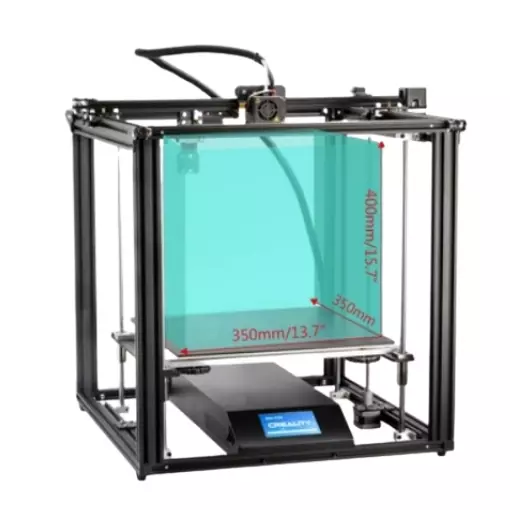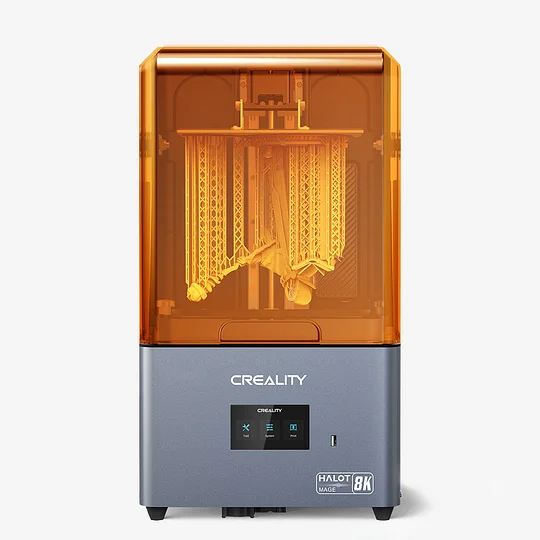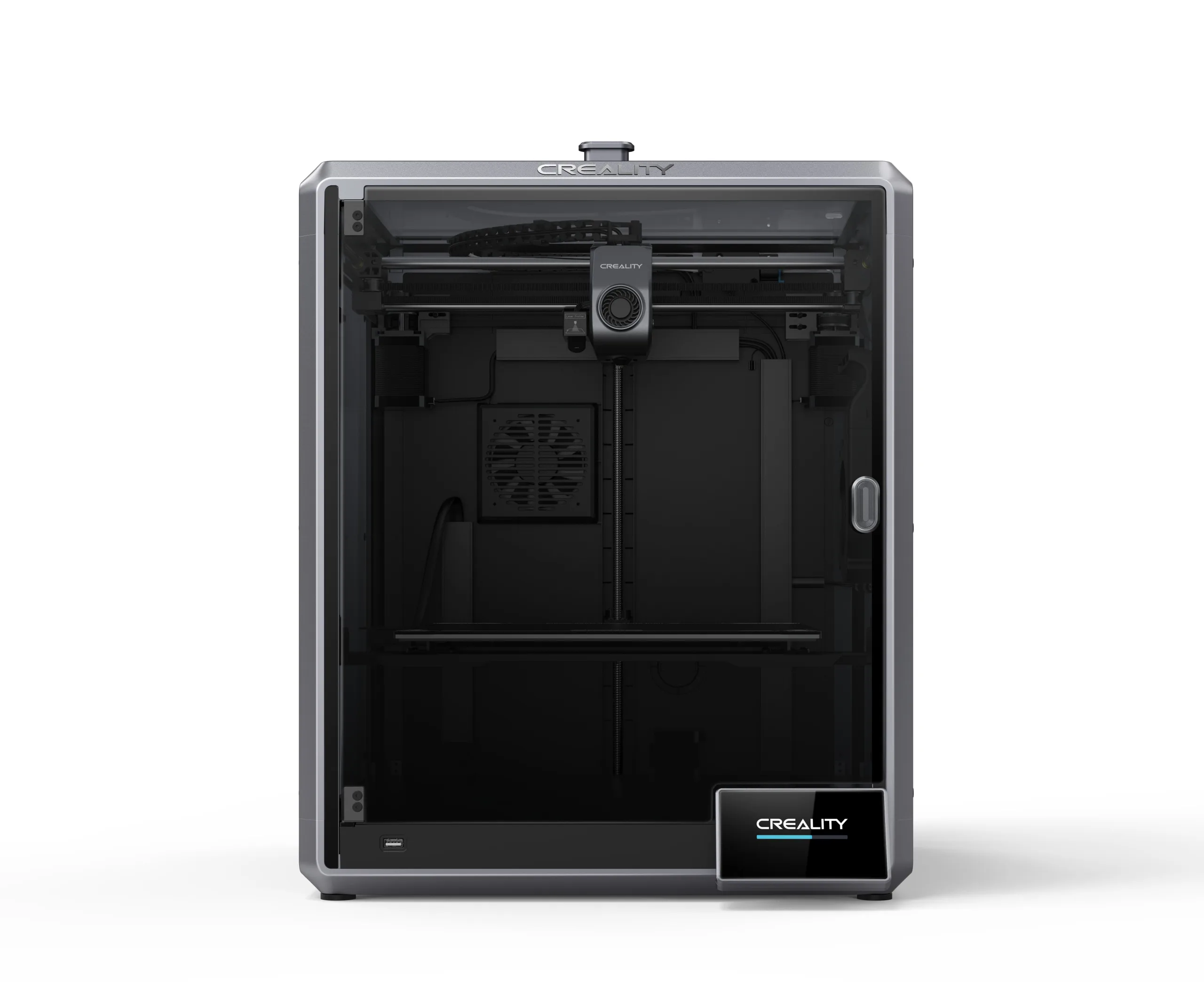Compare Ender 5 Plus vs Halot Mage vs K1 Max
Comparison between the best 3D printers
Choose the best 3D printer at the best price. The cheapest 3D printers are here.
Buy a 3D printer here with 3D Fila.
 |
 |
 |
|
| Model | Ender 5 Plus[BUY Ender 5 Plus] |
Halot Mage |
K1 Max[BUY K1 Max] |
| Printing Material | Filament | Resin | Filament |
| Estimated price | $599,00 | $399,00 | $1300,00 |
| Fabricante | Creality 3D | Creality 3D | Creality 3D |
| Release Year | 2019 | 2023 | 2023 |
| Print Volume [mm] | 350x350x400 | 228x128x230 | 300x300x300 |
| Printer Size [mm] | 632x619x666 | 333x270x608 | 435x462x526 |
| Weight [kg] | 18,2 | 12 | 18 |
| Power Loss Recovery | YES | NO | YES |
| Maximum Resolution [mm] | 0,1 | 0,01 | 0,1 |
| Processor | 32 bits | ||
| Display | Touchscreen TFT 4,3'' | Display touchscreen 4,3'' | Display touchscreen 4,3'' |
| Power Supply | 24V / 504W | 100 W | |
| Connectivity | SD / USB | USB | USB / Wi-Fi / Ethernet |
| Operating systems | Windows, Mac, Linux | Windows, Mac, Linux | Windows, Mac, Linux |
| Date of registration in the system | 2021-04-14 | 2023-05-23 | 2023-12-01 |
| Release date | 2019 | 2023 | 2023 |
| Extra features | The Ender 5 Plus offers a large print volume (350x350x400 mm) and fast assembly. It includes a BLTouch sensor, but with range limitations. It stands out for its dimensional accuracy, although it requires adjustments to the slicer settings. Despite the noise, its integrated design saves space, and includes features such as a filament sensor and power resumption. Ideal for large projects, it requires refinement in the settings for high-quality prints. | The Halot Mage stands out with its easy-to-operate, space-saving MageArch hinged lid that filters 99.89% of UV light. It includes an integrated air purifier with a large, efficient activated carbon filter that is ideal for absorbing resin odors. Its ultra-stable Z-axis with dual linear rails ensures larger, more accurate prints with minimal wobble. Plus, it features a robust tempered glass LCD protector for durability and protection against impacts and resin spills. | The Creality K1 Max stands out as a fast Core XY 3D printer with a large build volume of 300 x 300 x 300 mm. It is fully enclosed and equipped with AI sensors to prevent print failures. This model has a smooth and flexible PEI build platform, and uses an automatic leveling system with LIDAR, as well as a filament run-out sensor. LAN, Creality Cloud and USB Flash Disk connectivity are available, as well as a 4.3-inch touchscreen interface. The K1 Max is robust, weighing in at 18 kg, and includes an AI camera and limited version of the Klipper firmware. Its motion system is solid and the printer is efficient with high-temperature filaments, but it is not silent. Assembly is 99% complete, requiring only minor adjustments before use. |
| Support for multiple colors and materials (AMS and CFS) | NO | NO | NO |
Notes * |
|||
| Cost-benefit | 6 / 10 | 8 / 10 | 7 / 10 |
| Hardware | 2 / 10 | 4 / 10 | 4.8 / 10 |
| Screen | . | . | . |
| Print volume | 4 / 10 | 3 / 10 | 4 / 10 |
| Performance | 1 / 10 | 9 / 10 | 5 / 10 |
| [BUY Ender 5 Plus] | [BUY K1 Max] |
Conclusion |
| In conclusion, when comparing the Ender 5 Plus, Halot Mage, and K1 Max 3D printers, each model has its unique strengths and weaknesses that cater to different user needs and budgets. The **Ender 5 Plus** is a robust option with a large print volume and decent dimensional accuracy, making it suitable for larger projects. However, it requires meticulous settings adjustments and can be noisy during operation. Its power loss recovery feature is a significant advantage for long prints, but its cost-benefit ratio is moderate. The **Halot Mage**, being the most affordable and the newest model, offers an impressive air purification system and ultra-stable printing capabilities. It excels in user-friendly design and safety features, making it particularly attractive for users concerned about resin odors and print accuracy. Its lower print volume may limit its appeal for larger projects, but its cost-efficiency and performance rating makes it a favorable choice for beginners or those on a tighter budget. The **K1 Max**, while the most expensive, delivers speed and advanced features such as AI sensors and automatic leveling. It stands out for its enclosed design and robust build, which could appeal to more experienced users who prioritize high performance and reliability over cost. However, potential buyers should be aware of its noise level and the need for minor assembly. Ultimately, the choice among these printers should be guided by the user’s specific needs—whether that’s a large print volume, cutting-edge features, or budget constraints. Each printer represents a reasonable investment within its category, but users are advised to weigh their priorities carefully to select the right model that balances performance and price. |

